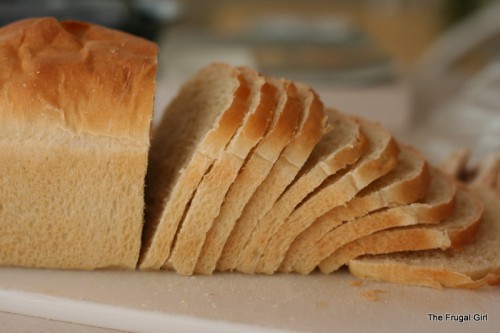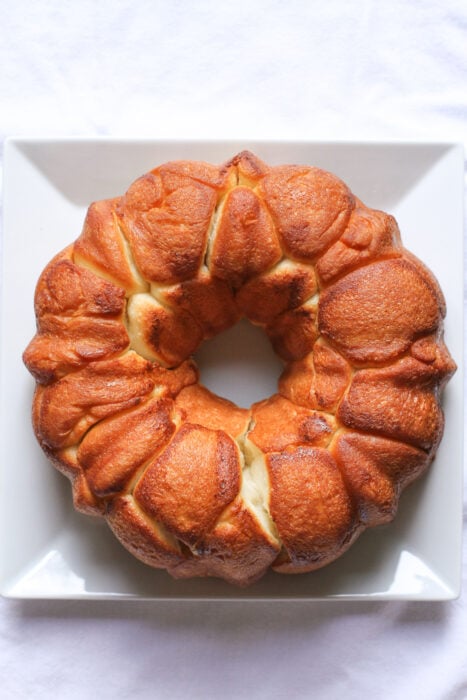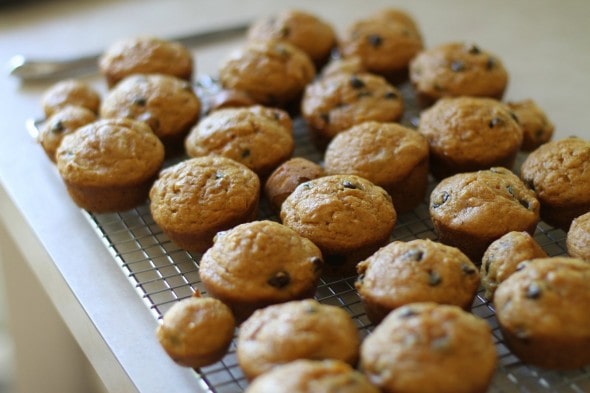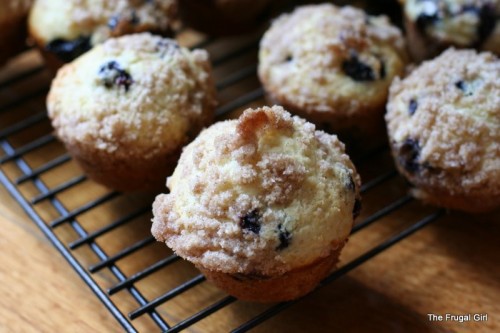
You may have heard about gluten before…it makes the news occasionally, and you may have seen a “gluten-free” label on food packages. Still, not very many people know what gluten really is, and even fewer know how it affects the baking process.
Gluten is a protein that is found in some grains, in various degrees.
Wheat has a very high gluten content, while rice has no gluten at all. Gluten is very important in baking, as it provides structure for the dough.
However, care has to be taken to develop the gluten in an appropriate way for different types of baking.
Gluten is formed from two proteins that join together when they are moistened
It is an elastic substance, and it can be made more elastic by stirring and stretching. When you knead yeast dough, you are developing tough, elastic gluten strands (this is why properly kneaded bread dough will bounce back when you poke it…that’s the gluten at work).

Yeast breads benefit greatly from strong gluten formation
Yeast doughs rise when the yeast ferments and forms air bubbles. The stretchy bread dough captures these air bubbles, and that’s what makes the dough rise. Lots and lots of little air bubbles lift the dough.
If yeast dough is not properly kneaded, it will not be stretchy enough to expand with the yeast (the gluten strands will just pop because they won’t be strong enough to hold the air bubbles), and the dough will not rise properly.
So, when you’re making yeast dough, it’s important to mix and knead it well.
Breads and other baked goods that are leavened with baking powder or baking soda do not need very much gluten development.
In fact, too much gluten development in these types of doughs and batters will result in a tough and chewy end product. This is why most muffin recipes instruct you to stir only until the ingredients are moistened.

Non-yeast baked goods also use fat to help to retard gluten development. Fat coats the strands of gluten, keeping them from forming into long, elastic strands, which produces a tender baked good. This is why muffins, scones, and biscuits tend to have a much higher fat content than do yeast doughs, and it’s why low-fat muffins tend to be quite chewy. 😉
Interestingly, shortening got its name because of the way it affects gluten…butter, lard, Crisco, and margarine all shorten the gluten strands, and thus are calling shortening.
You might be wondering by now why all of this is important. If you come away from this post with nothing else, just remember two things:
It’s almost always very important to mix and knead yeast doughs thoroughly (there are a few exceptions),
It’s equally as important to have a very gentle hand with the mixing when you are making breads that are leavened with baking soda or baking powder.
In short:
Lots of stirring/kneading = good for yeast bread.
Lots of stirring/kneading = bad for almost every other kind of bread.
You can work off your frustrations and stress by kneading your yeasty doughs with great energy, but for everything else, keep your mixing to a minimum. Your muffins will thank you.


Kimberly Yue
Sunday 23rd of June 2013
Hi Kristen!
I've followed your blog for several years now and I'm finally ready (and need to) bake bread. Before I was in grad school, and it left little time to prepare things myself, but now, my daughter has developed some pretty extensive food allergies (dairy and soy top the list!) and I find almost all of the commercial breads have some version of soy in it (why, I do not know!). Soooo...I've armed myself with several bread making cookbooks and I'm ready to dive in. My question is, where do you purchase your yeast? Are the little packets at the grocery store good enough, or do you have a wholesale source that you purchase from? Do you save a little of your dough to start the next batch (as some of the cookbooks describe this practice, it seems like it's for people baking bread EVERY day, which I hope not to do....). Thanks so much for your help and have a great weekend!
Kristen
Tuesday 25th of June 2013
Definitely buy your yeast in bulk, either from a warehouse club or online. Those little packets are CRAZY expensive.
Carol
Monday 2nd of January 2012
Hi Kristen, I want to bake a more airy bread. I love breads with holes, not the "batter whipped" smooth texture you find in store bought white bread. Any suggestions? Thanks, Carol
Kristen
Monday 2nd of January 2012
Have you tried the Artisan bread in 5 minutes a day method? That produces a more hole-y bread.
Wednesday Baking | Homemade Cornbread
Thursday 25th of February 2010
[...] Most cornbreads, this one included, are leavened with baking powder or baking soda, not yeast, which makes it easy to get them on the table in a hurry (I almost said “jiffy” but I think that’s the name of one of those boxed cornbread mixes!). It also means that you do NOT want to overmix the batter. If you do, your cornbread will be tough (remember our lesson on gluten?) [...]
Wednesday Baking | Troubleshooting Yeast Bread
Wednesday 24th of February 2010
[...] didn’t knead properly/sufficiently. As I explained in my post about gluten, kneading stretches and develops the gluten in the flour. Proper kneading produces stretchy [...]
How To Make Buttermilk Biscuits From Scratch |
Wednesday 7th of October 2009
[...] baking biscuits is that you do NOT want to mix and knead the dough much at all. As I mentioned in my post about gluten and baking, non-yeast breads are more tender and soft when the gluten is not developed. If you mix and knead [...]